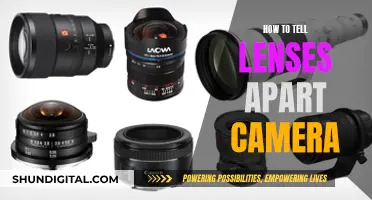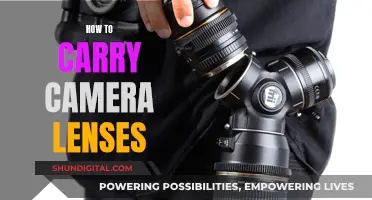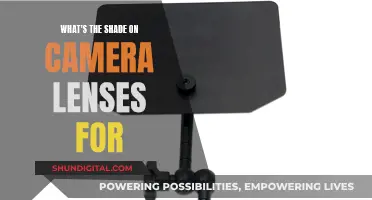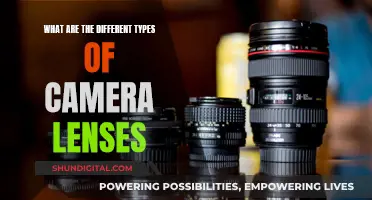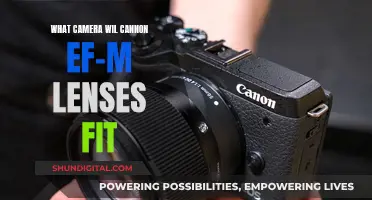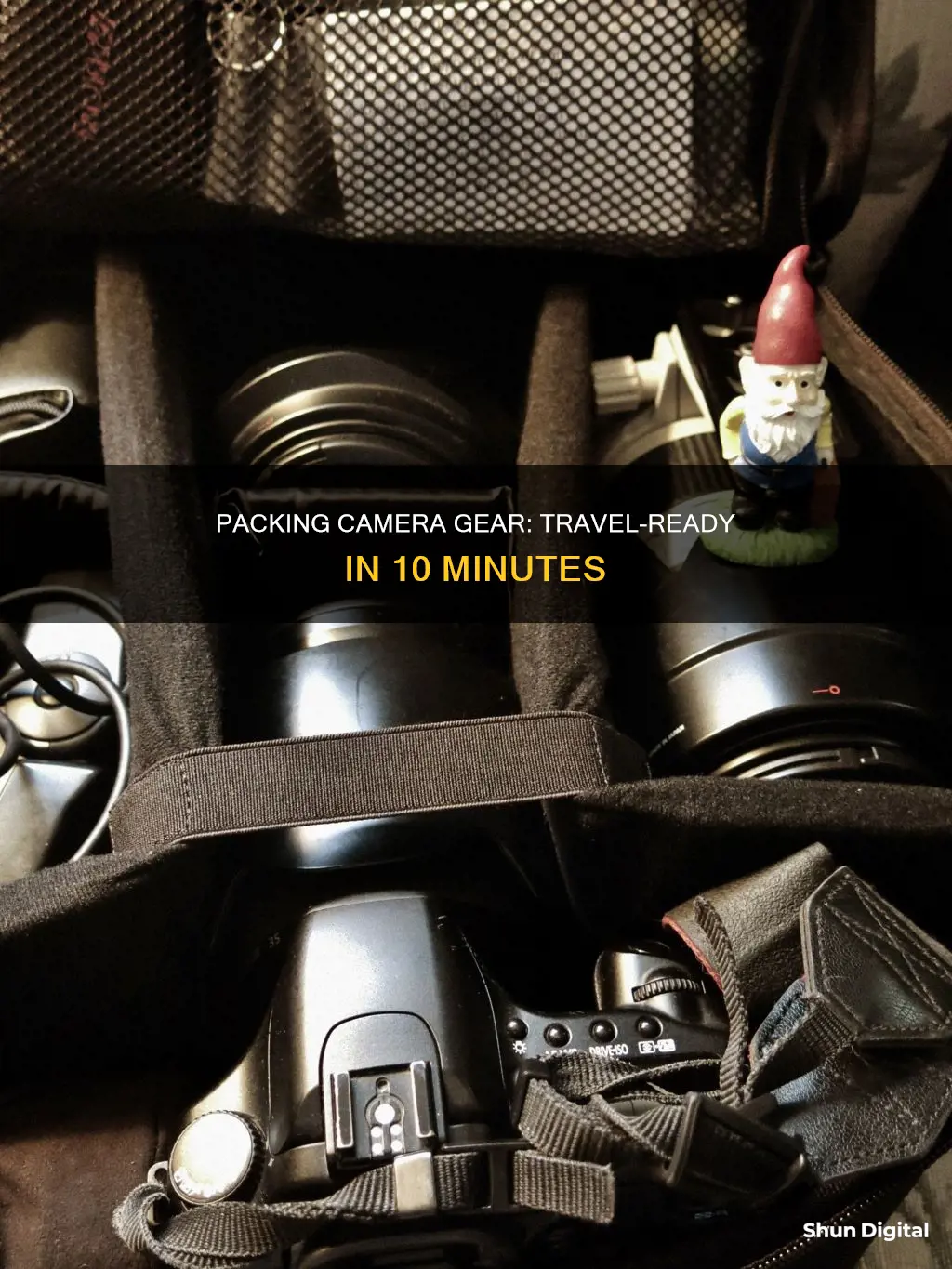
Travelling with camera gear can be a challenge, especially if you're flying or backpacking. The key to packing your camera and lenses for travel is to keep your equipment safe, accessible, and organised. Here are some tips to help you pack your camera and lenses efficiently and effectively for your next trip:
- Choose the right bag: Invest in a dedicated camera bag, such as a camera backpack, shoulder bag, or hard case. These bags are designed to protect your gear and make it easily accessible. If you're travelling light, a camera pouch or holster might be a good option.
- Disassemble your camera: Separate the lens from the camera body, take out the battery, and unclip any straps. This prevents wear and tear on the threads and moving parts. It also prevents the camera from accidentally turning on and draining the battery.
- Protect your gear: Wrap each component in padding or cloth to protect them from knocks and bumps. You can use dedicated padded inserts or cloth wraps made for camera gear. Alternatively, you can use soft clothing like t-shirts and sweaters for padding.
- Organise your extras: Keep USBs, memory cards, chargers, and other small accessories organised in zip pockets inside your bag. Group similar items together to make them easier to find.
- Protect against liquids: If you're packing your camera in a bag with toiletries or a water bottle, use plastic ziplock bags to protect your camera from spills or leaks.
- Keep lenses upright: When packing your lenses, position them upright or sideways to avoid damaging the front element if the bag is dropped.
- Use dividers: Use flexible dividers in your bag to create individual compartments for each piece of equipment. This prevents your gear from banging against each other and causing damage.
- Only pack what you need: Avoid overpacking by only bringing the lenses and cameras you need. This will reduce weight and make your bag more comfortable to carry.
- Keep caps on: Ensure all your lenses and cameras have their caps on to protect them from scratches and damage.
- Bring silica gel packets: Silica gel packets help absorb moisture and keep your equipment dry, especially in humid environments or if your gear gets wet.
- Battery and memory card management: Always carry extra batteries and memory cards. Keep batteries in your carry-on luggage and remove them from the camera during travel to prevent accidental power drain.
- Be mindful of airport security: Keep your camera gear with you at all times and never check it in. At security checkpoints, have a good grip on your camera and be prepared to take it out of your bag.
| Characteristics | Values |
|---|---|
| How much gear to bring | Depends on the type of trip and how much you can carry |
| Where to put gear | Split between overhead carry-on item and under-seat personal item |
| Organisation | Use a system to ensure you don't forget smaller items |
| Batteries | Keep in carry-on luggage, not checked luggage |
| Liquids | Put camera in a sealed plastic bag to protect from spills |
| Insurance | Get insurance for expensive equipment |
| Camera bag | Use a dedicated camera bag with padding and flexible dividers |
| Lenses | Separate from camera body, with caps on |
| Protection | Wrap each component in something padded |
| Extras | Sort extras into easy-to-access pockets |
What You'll Learn

Disassemble your camera and wrap each component in padding
Disassembling your camera and wrapping each component in padding is a great way to protect your equipment when travelling. Here are some steps to help you with this process:
Firstly, separate your lens from the camera body. This prevents unnecessary wear on the threads and moving parts of your camera. It also ensures that your camera doesn't accidentally turn on during travel and drain the battery.
Next, wrap each component in padding. You can use dedicated padded inserts or cloth wraps designed specifically for camera gear. These options are ideal for preserving your equipment. However, if you don't have access to these materials, you can use soft clothing, such as cotton t-shirts, as the first layer, followed by something with more padding, like a sweater, as the second layer. If you don't have divider inserts, try to wedge soft items between each component for extra cushioning.
Additionally, if you're travelling with a tripod, you can wrap it in clothing or place it in a separate bag to protect it and your other gear from potential damage.
By following these steps, you can effectively protect your camera and its components during travel, ensuring that they remain safe and secure.
Why Are Camera Lenses So Affordable?
You may want to see also

Use a dedicated camera bag with flexible dividers
Using a dedicated camera bag with flexible dividers is a great way to ensure your gear stays safe and organised during travel. Here are some tips on how to make the most of this type of bag:
Choose the Right Size
Before purchasing a dedicated camera bag, it's important to consider the amount of gear you typically travel with. If you're only bringing one camera and lens, a small bag with minimal dividers will suffice. However, if you're bringing multiple cameras and lenses, you'll need a larger bag with more dividers. It's also important to make sure the bag is just big enough for your equipment, as too much extra space can cause your gear to slide around, potentially leading to damage.
Disassemble and Protect Your Gear
When packing your camera and lenses, it's best to separate the lens from the camera body and remove the battery. This will prevent unnecessary wear on the threads and moving parts. Wrap each component in padding or cloth to protect them from knocks during travel. If you don't have a dedicated padded insert, you can use soft clothing like cotton t-shirts and sweaters as an alternative.
Utilise the Dividers
Flexible dividers can be rearranged to perfectly fit all your equipment, ensuring that your camera and lenses don't jostle around and bang into each other. This will help prevent scratches, dents, and other types of damage. Make sure to give each item its own pocket or compartment to maximise protection.
Pack Extras in Easy-to-Access Pockets
In addition to your camera and lenses, you'll want to bring along extras like USBs, memory cards, chargers, safety straps, and extra lenses. Group like items together and store them in zip pockets inside your bag for easy access. That way, you won't have to dig through your bag to find what you need.
Protect Against Spills and Moisture
If you're packing your camera bag with other items like toiletries or a water bottle, consider using plastic ziplock bags to protect your gear from spills or moisture. Silica gel packets can also help keep the air dry and prevent moisture damage to your equipment.
Drying Camera Lenses: Quick and Easy Steps for Photographers
You may want to see also

Pack your camera gear in carry-on luggage only
When travelling with camera gear, it is best to keep it with you at all times. This means packing it in your carry-on luggage only. Here are some tips for packing your camera gear safely and securely in your carry-on luggage.
Choose the right bag
It is important to choose a bag that is designed to carry camera gear. These bags are made to protect your equipment and make it easily accessible. A dedicated camera bag will have dividers to keep your gear organised and protected. It should also be well-padded to protect your gear from bumps and knocks.
Disassemble and protect your gear
Before packing your camera gear, disassemble everything by separating the lens from the camera body and removing the battery and strap. This will avoid any unnecessary wear and tear on the threads and moving parts. Wrap each component in padding to protect them from knocks and bumps. You can use dedicated padded inserts or cloth wraps made for camera gear. If you don't have these, you can use soft clothing like cotton t-shirts and sweaters as padding.
Keep your gear accessible
When packing your camera gear, make sure it is easily accessible. You don't want to be fumbling around, trying to get to your camera when you need it. Keep your camera and lenses in separate, easily accessible pockets or compartments. Use ziplock bags for small accessories like memory cards, batteries, and USBs.
Keep your gear safe from liquids
If you are packing liquids in your carry-on, make sure your camera gear is protected from any potential spills. You can use plastic ziplock bags or a sealed plastic bag to protect your gear.
Keep your gear with you at all times
Do not check your camera gear in with your hold luggage. Keep it with you at all times in your carry-on luggage. This will ensure that your gear doesn't get lost or damaged and will give you peace of mind.
Other tips
- Only pack the gear you need to keep the weight down.
- Make sure all covers (USB ports, lens caps, battery compartment panel, etc.) are tight to prevent anything from getting dislodged or damaged.
- Keep your battery handy as airport screening personnel may ask you to prove that your camera is a working piece of equipment.
- Always be polite and friendly to airport staff and security.
Point-and-Shoot Cameras: Interchangeable Lenses or Not?
You may want to see also

Protect your camera from bumps, spills, and theft
Disassemble your camera
Before packing your camera, it is important to disassemble it. Detach the lens from the camera body, take out the battery, and unclip the camera strap. This prevents unnecessary wear and tear on the threads and moving parts of the camera. It also prevents the camera from accidentally turning on and draining the battery.
Wrap your camera and its components in padding
Protect your lenses and camera body by wrapping them in padding. You can use dedicated padded inserts or cloth wraps designed for camera gear. If you don't have access to these, you can use soft clothing like cotton t-shirts and sweaters as an alternative. Try to wedge soft items between each component for extra cushioning if you don't have insert dividers.
Choose the right bag or case
Consider purchasing a hard-sided case with ample padding. Some padding is made specifically for certain types of lenses and camera bodies, so take the time to find the best option for your equipment. Keep in mind that these cases can be expensive. As a cheaper alternative, pack the camera in a cushioned bag or wrap it before placing it in your carry-on bag. If you still have the original packaging for your camera, consider using that while you travel.
Protect your camera from spills
If you pack your camera in a carry-on bag with toiletries, put it in a sealed plastic bag to protect it from spills. Additionally, use plastic ziplock bags for small accessories like USBs, memory cards, and chargers.
Get insurance for your camera equipment
Protect your expensive camera equipment by insuring it before you travel. Contact your insurance company or agent for a quote.
Sigma Lenses: Compatible with Full-Frame Cameras?
You may want to see also

Choose the right bag or case
When choosing the right bag or case for your camera and lenses, there are several factors to consider. Firstly, it is recommended to use a dedicated camera bag instead of a regular backpack or suitcase. Camera bags are specifically designed to protect and secure camera equipment, with features such as camera-sized compartments, lens-sized compartments, and dividers to keep your gear organised and safe.
When selecting a camera bag, opt for one that is just big enough to fit all your equipment. This ensures that your camera and lenses don't slide around and get damaged. It's also important to have flexible dividers so that you can rearrange them according to your setup. Additionally, look for a bag with ample padding to protect your gear from bumps and drops.
If you're looking for a bag that is easy to carry and provides comfortable transport over long distances, consider a camera backpack. Backpacks offer ample space, padding, and versatility, making them ideal for landscape, wildlife, or travel photographers who need to carry their gear on long hikes or flights.
For everyday situations or shorter trips, a camera pouch or holster might be more suitable. These are smaller and provide easy access to your camera and a single lens. However, they may not have enough space for extensive travel or hiking.
If you're concerned about theft, opt for a bag that is relatively difficult to open from the outside, such as one with small zippers. This adds an extra layer of security while also preventing accidental unzipping.
Lastly, consider your budget. Dedicated camera bags can be expensive, but they are a worthwhile investment if you plan to travel with your camera gear frequently. Alternatively, you can use a cheaper option, such as a cushioned bag or wrapping your camera and lenses before placing them in your carry-on bag.
Choosing Lenses for Your Mirrorless Camera: A Quick Guide
You may want to see also
Frequently asked questions
First, consider what type of trip you are going on and what kind of photography you will be doing. Weight and size are important factors to consider, especially if you will be carrying your gear on your back. You may want to opt for a lightweight camera and zoom lenses to reduce the weight of your gear.
Disassemble your camera by removing the lens and the battery. Tighten all covers, including USB ports, lens caps, and battery compartment panels, to prevent damage during transit. Wrap each component in padding or soft clothing to protect them from knocks and bumps. Place them in a dedicated camera bag with dividers to keep them separated and protected.
Don't forget to pack extra memory cards, batteries, a battery charger, and a camera cleaning kit. If you are travelling with a tripod, consider getting a separate tripod bag or attaching it to the outside of your backpack. You may also want to bring a waterproof cover for your camera and silica gel packets to absorb moisture.
Always carry your camera gear as hand luggage to avoid the risk of loss or damage. Split your gear between your carry-on bag and your under-seat personal item. Keep your most valuable items with you in the under-seat bag. Remove lithium-ion batteries and pack them in your carry-on luggage, as they are not allowed in checked baggage.
Choose a camera bag that is difficult to open from the outside, such as one with small zippers. Look for features like lockable zips and anti-theft technology. Always keep your camera bag within sight and never let it out of your possession.


